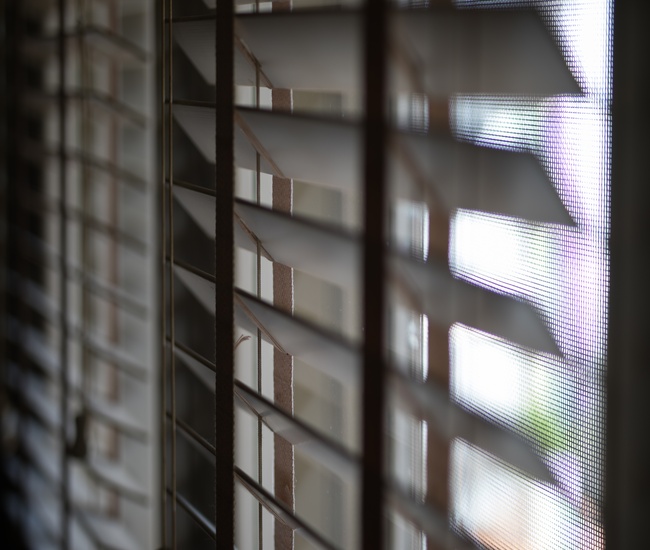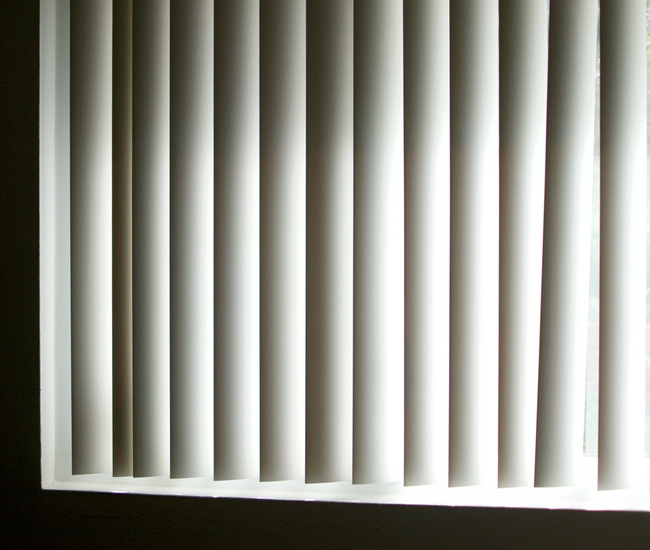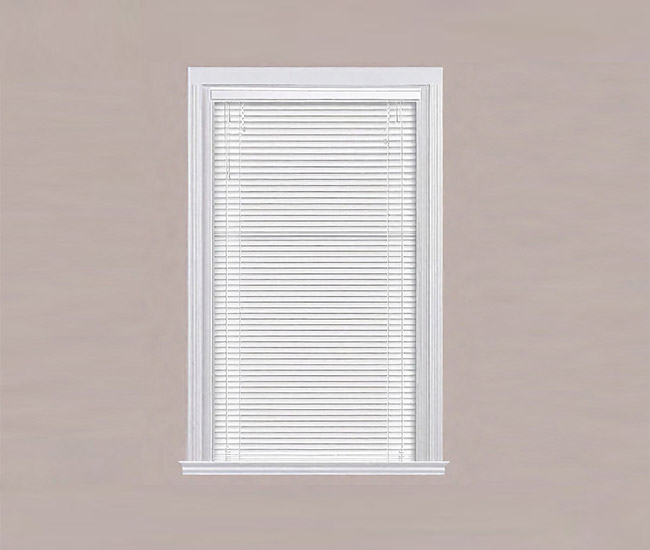Want to add a touch of classic elegance to your home with Venetian blinds but unsure which type – aluminum, plastic, wood, faux wood – will suit your unique circumstances?
If you want to install a Venetian blind for a high moisture area, we highly recommend the faux wood option. You can buy a 2-inch faux wood Venetian blind with cordless control for your bedroom or bathroom for as low as $40! The price typically ranges from $40 (for a 24” W x 24” H window opening) to $125 (for a 72” W x 74” H window).
On the other hand, the price will be higher for wooden Venetian blind, starting at $85 and going above $500. The metal options, especially aluminum mini-Venetian blinds are again inexpensive, with average price range being $20 to $80 for 24” by 24” and 72” by 72” windows, respectively.
The prices of vinyl or plastic Venetian blinds lie somewhere between those of aluminum and wooden blinds, and typically range from $15 to $200, based on size, quality of material, and slat design.
Fabric is the 5th material option for custom Venetian blinds. The fabric blinds are a bit costlier, with prices ranging from $85 (24” W x 30” H) to $465 per window (115” W x 120” H).
What Are Venetian Blinds?

Venetian blinds are a type of window treatments that are made of horizontal slats that can be raised, lowered, and tilted up or down for the required amount of light, privacy, security, insulation, energy efficiency, and other benefits.
They are available in several materials, including plastic, wood, faux wood, fabric, and metal (aluminum). In addition, there are many different styles and colors of Venetian blinds available on the online market. So, you can easily choose a custom Venetian blind for your home’s windows.
Scroll on to learn more about Venetian window treatments.
Historical Background
While many people are unsure exactly when Venetian blinds were invented, it is believed that they first appeared in the late 18th century, probably near Venice. In 1841, John Hampson of New Orleans was awarded U.S. patent #223 for this method. Since then, Venetian blinds have evolved into a standard window covering that many people still use. Vinyl and metal Venetian blinds have become extremely popular.
Why Choose Venetian Blinds?

Here are some reasons why homeowners and businesses prefer Venetian blinds over other window treatments options.
Horizontal and Vertical Slats
Venetian blinds are one of the most popular window treatments today, only next in popularity to roller shades. These blinds have horizontal slats and are suspended by cords or strips of cloth. Some variants are also available in vertical slats.
Easy to Use
Venetian blinds are easy to use with the help of different lift mechanisms, such as corded, cordless, continuous loop, motorized, and smart lift systems.
Privacy

With their slats tilted up, Venetian blinds provide a great deal of privacy, while still letting in some light into your room.
Available in Micro-slats
Micro-slats are also available, and these allow you to have smaller slats without compromising privacy. Micro-slats made from faux wood are better suited for areas with direct water contact, like bathrooms or kitchens.
Classic Look and Feel
Another advantage of Venetian blinds is that they give the windows a classic look and feel.
Protection against UV Rays
Venetian blinds protect against the damaging UV rays of the sun, guarding your skin against cancer and your furniture against fading or discoloration.
Durability
Venetian blinds may look like they’re carved from a tree, they are made from a sturdy, durable, low maintenance material that will last for decades.
Styles of Venetian Blinds

Cordless Venetian Blinds
The most popular option for regular raising, lowering, and adjusting of Venetian blinds is the cordless type. Cord-free options are lighter and easier to operate than corded Venetian blinds. The child-safe cordless option has two types of operating systems: side chain and wand. Side chain blinds can be raised and lowered by hand, whereas wand-operated blinds are operated by a remote.
Average Price range: $40 to $120
Double Roller Blind Style
Another option for raising and lowering Venetian blinds is the double roller blind. These blinds feature two layers of fabric, one of which can be sheer, while the second layer is lined with blackout fabric. Both these options can help you achieve the same effect of blocking sunlight while allowing privacy. If you prefer a more subtle, elegant look, a Roman shade can be a good alternative to Venetian blinds.
Average Price range: $60 to $450
Top-down Bottom-up Style

Top-down bottom-up Venetian blinds are available, while cordless versions can be used in bedrooms. You can select either type depending on the style of your home or office.
Average Price range: $150 to $550
Venetian Blinds vs Mini Blinds

Mini blinds, for example, are similar to Venetian blinds but are made with thinner slats that measure one to two inches. These blinds are commonly made with metal such as aluminum and are more affordable. In addition, they are easier to maintain than standard Venetian blinds. These blinds are also often used in schools, industrial facilities, and offices. However, you should know that they are not as durable as the larger versions.
Material Choices for Vertical Blinds
They come in a wide variety of materials, including wood, aluminum, and plastic.
Wood

Wooden Venetian blinds are usually listed as wood blinds, which is what they’re called in the United States. Also, they are available in man-made materials. These materials often resemble wood but are not a substitute for it. Unlike wood blinds, synthetic materials don’t get warped easily, and are more suitable for areas where direct contact with water is inevitable.
Basswood
Real wood Venetian blinds are made from basswood, a type of hardwood from North America with a consistent grain. This kind of wood is used for many different things and has many advantages over faux wood. It’s lightweight and adds window insulation, plus it has an integrated staining process that makes the color more resistant to fading. Wooden blinds are also easy to regulate, reducing the need for expensive cleaning products.
Faux Wood

Faux wood Venetian blinds are the most affordable choice, with horizontal slats interconnected with cords or decorative tapes. Faux wood blinds are also more durable and moisture resistant and can be motorized. Faux wood Venetian blinds can be purchased in a variety of colors and designs to fit any room in your home. They come in a variety of colors, from creamy white to rich red and browns.
Metal or Vinyl
Although real wood or fabric venetian blinds are available, most people opt for the cheaper metal versions. If you’re on a tight budget, metal is the best option. While metal blinds require minimal maintenance, they may not provide the same level of warmth insulation. For this reason, you’ll need to choose the most durable type. However, you can also purchase fabric or metal blinds if you’re not concerned about maintenance.
Aluminum
Aluminum Venetian blinds are lightweight and durable. They do not warp or rust, making them a practical choice for bathrooms. Aluminum is also waterproof, so they do not need to be painted or varnished, and they can withstand constant use for years. Wooden Venetian blinds are also a durable option but are more expensive than their aluminum counterparts. Real wood Venetian blinds feature a wood grain, but are more susceptible to damage if not taken care of properly.
Installation and Maintenance

Venetian blinds are easy-to-install, operate, and clean window treatments. You just need to attach mounting brackets to the window frame to hang the blinds. Meanwhile, they also have a low maintenance cost. Therefore, they are a good choice for all types of windows in your home, office, or other space.
Budget Consideration

Venetian blinds are also affordable window treatments for your home. You can easily buy a superior-quality Venetian blind for around $100. Also, they are offered with various bonus features, like free samples, free shipping, a worry-free fit guarantee, and a free lifetime warranty.
Measuring Guide for Venetian Blinds

Width: Measure the exact width of the window frame opening in 3 places at top, middle, and bottom. Round down the measurements to the nearest ⅛ of an inch.
Height: Measure the height of your window opening in 3 places: left, center, and right. Circles the tallest value. This is the number you submit for your window’s height (or length).
Note: Order the exact opening size with no deductions.
FAQs
What are different types of Venetian blinds?
Different types of Venetian blinds include aluminum Venetian blinds, faux wood Venetian blinds, timber Venetian blinds, cedar Venetian blinds, plastic Venetian blinds, and vinyl Venetian blinds.
What is the best material for Venetian blinds?
PVC, aluminum, timber, faux wood, and plastic are the popular choices for Venetian blinds. Aluminum is the best material for an affordable touch of fashion and functionality to your windows.
What is the best type of blind to buy?
Roller blinds, Venetian blinds, and Roman blinds are some of the most popular options to buy. Roller blinds are a great choice for rooms that receive a lot of sunlight. Venetian blinds are an affordable choice to control light. Roman blinds are beautiful window covers that provide a luxurious look.
Which is better: aluminum or PVC blinds?
If you are looking for durable blinds, aluminum blinds are made of stronger material and are less likely to break than PVC blinds. If you need affordability, PVC blinds are more affordable, as PVC is a more economical material to produce. Plus, PVC blinds can flex easier than aluminum, so they are less likely to dent or crease.
Need More Help?
Still unsure which type of Venetian blinds are fit for your unique situation? Get in touch for further help now! Use 24/7 live chat or give us a call at (800) 863-6109 to contact our experts for DIY solutions.